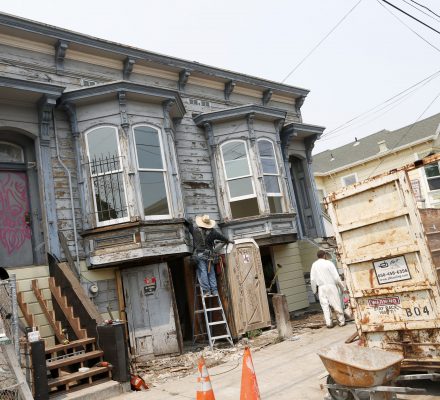It does not matter whether you are a first-time investor or a seasoned pro; you may have asked yourself, “is owner occupied multifamily financing for me?” Lucky for you, we are here to help you better understand this investing style and discuss some of its best strategies.
There are multiple avenues to kickstart your investing journey, from purchasing a small rental unit to partnering with an equity investor, buying into a REIT, and many more.
However, people often look up to investing in owner occupied multifamily real estate. But what are the benefits of opting for this investing style, and how can you maximize its revenue? Let’s find out!
What Does Owner Occupied Mean?
As the name indicates, an owner occupied multifamily investment property is where the property’s owner resides on-site or when the rental site doubles as their primary lodging. In other words, this investing style involves buying a multifamily home and living in one of its units while renting out the other ones.
The classification of these owner-occupied rental estates often occurs based on the number of units. For example, multifamily real estate with two to four units is referred to as a residential property, while anything with five or more units falls under the commercial property category.
Each property type has several benefits, but to obtain these benefits, your property should have four or fewer units. On the other hand, each mortgage lender treats each commercial property type differently, but that is talk for another day.
Benefits of Owner Occupied Property
Investing in an owner occupied property is also known as house hacking. It allows you to live practically free in your home since the rental income covers the housing expenses. While buying such an investment property does not always cause success in house hacking, it is certainly worth a try as you may be able to save lots of money by not paying the mortgage or rent.
In other words, acquiring real estate that pays for itself can allow you to achieve a higher return on your investment.
Aside from living cost-free, owner-occupied multifamily estates can also bring with them the following advantages:
Better Property Management
Sure, investing in a passive income is an excellent way of securing future financial freedom, but monitoring its maintenance from afar can be tricky.
When living right next door, you will never be stuck guessing about the condition of your property and whether or not it is taken proper care of because tenants are likely to look after the property and treat it as their own because of the fear of the landlord.
Stable Source of Income
Multifamily rentals are considerably less risky than other investment types. Why? You can continue making money from it even if a few units go vacant; hence, it can be a stable source of income.
Explores Different Rental Strategies
A multifamily real estate with two to four units can allow you to try different rental strategies for more profit. For instance, if you own a triplex or a 3-unit estate, you can use one as an Airbnb rental and rent out the other one. Determining the best rental strategy enables the real estate investor to maximize his earnings.
Attractive Financing Options
Coming towards the best part of owning multifamily estates. Mortgage lenders propose loans with low down payments and favorable interest rates for primary residential owner-owned properties. But what are some of the best strategies for owner-occupied multifamily financing? Let’s get to it!
The Best Strategies for Owner-Occupied Multifamily Financing
For buyers who are just getting their feet wet in the investing world, owner-occupied real estate can be their gateway to investing and homeownership at the same time. This is chiefly because of the numerous financing options or, in other words, different types of loans.
These are some of the best financing strategies for owner-occupied multifamily estates:
FHA Financing
The recession period, or what people call “The Great Depression,” was a difficult time for homeowners to buy and maintain property payments. The mortgage was short, balloon payments were large, and the affordability of investors? Zero. This led to the formation of the Federal Housing Authority or FHA in 1934 to facilitate affordable homeownership.
Currently, FHA loans serve as an attraction option credited to their low credit score requirement and low-down payment. Buyers who might not apply for a traditional mortgage are a promising substitute.
Designed to support low to moderate-income borrowers, this government-backed loan applies to people with a credit score of 580 and a 3.5% down payment. However, since this financing strategy requires customers to pay Private Mortgage Insurance (PMI), it can be costly in the long run. To qualify for the mortgage loan, the owner must reside in the property for at least a year.
VA Loan
Another government-approved loan you can utilize for financing multifamily estate of up to four units is a VA loan or Veteran Affairs Loan. And as implied in the name, they are offered to veterans, military service members, and their spouses.
Unlike the former option, they do not impose any private mortgage insurance, money down, or minimum credit score, making them a profitable strategy for financing your multifamily home.
But unfortunately, these loans are only accessible to certain people and require you to pay an additional funding fee of 0.5 to 3.6% on top of the loan amount.
Conventional Loan
Conventional loans are offered by credit unions, mortgage lenders, or your typical banks. They are a reliable financing option for a real estate investor with a better credit score.
They require a minimum down payment and can last from 10 to 30 years. Additionally, lenders who intend to occupy their property typically require a lower down payment than those purchasing their properties as an investment.
Freddie Mac and Frannie Mae are the leading private companies in this niche which ensure an affordable and reliable supply of mortgage funds and provide liquidity and stability to the conventional loan market.
State and Local Programs
If you aren’t applicable for any of the above financing options, several state and local programs can help you with your real estate journey and make getting a home possible.
Depending on your area, these programs can offer you loans similar to the FHA to help you purchase your multifamily property. Some states even provide “soft second” mortgages to relieve homebuyers by splitting their mortgage into two. This can encourage loan terms for the buyers and reduce any potential risk.
How to Start Investing
Investing in owner-occupied multifamily properties is a great way for amateur investors to test the water before entering the market.
If you are not ready to buy an apartment complex or a fix & flip real estate, renting out half of your home can lead to more accessible financing, extra income, and lots of learning experiences. And, if it turns out to work out, you can move on to your next property purchase and take your investing career above and beyond.
But again, the key to success lies in determining the right financing option for your owner-owned multifamily property.




